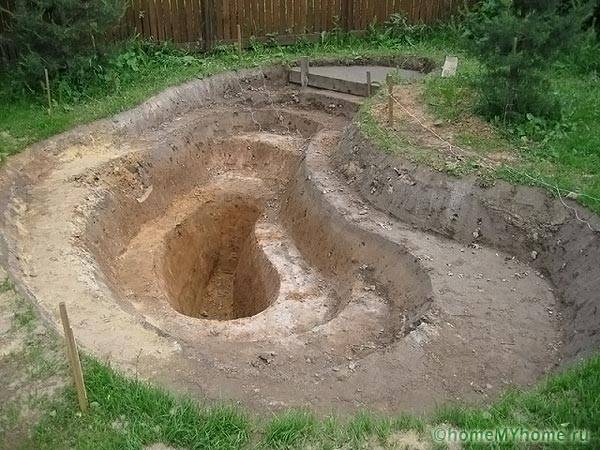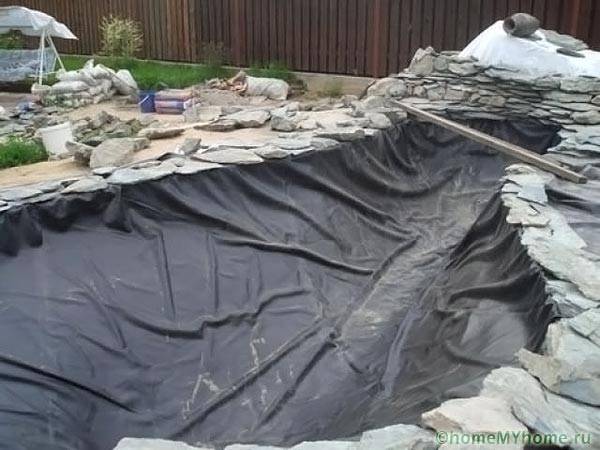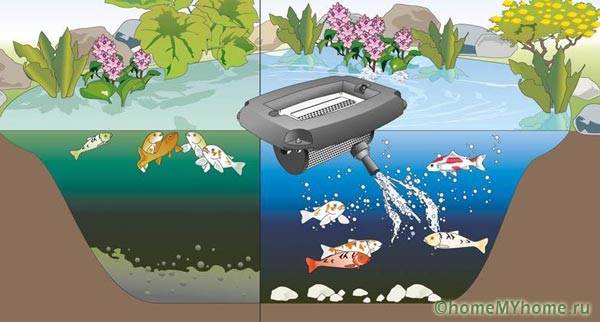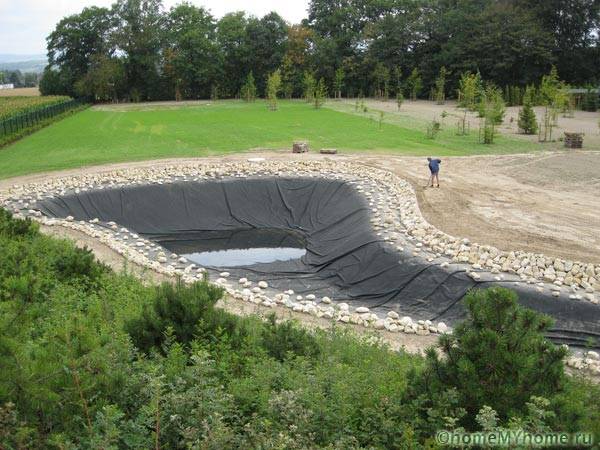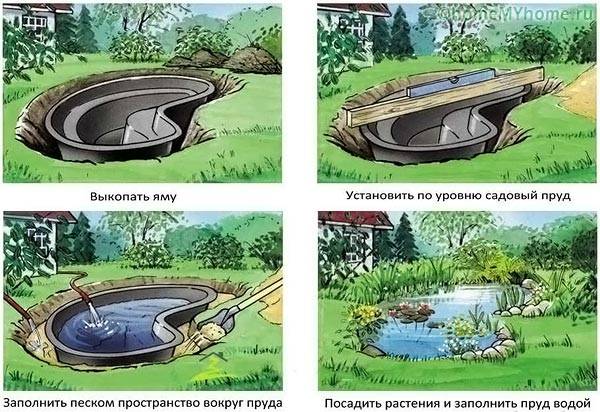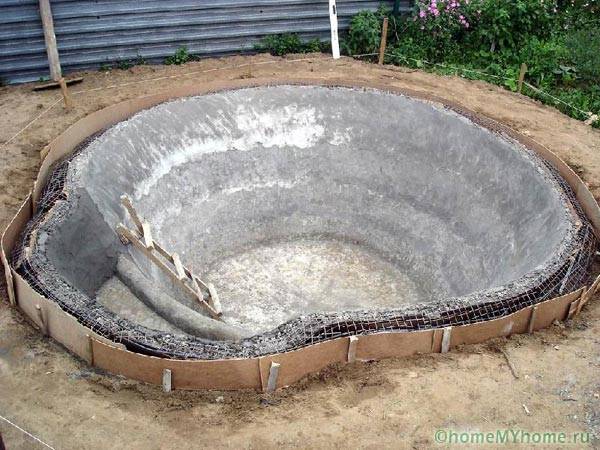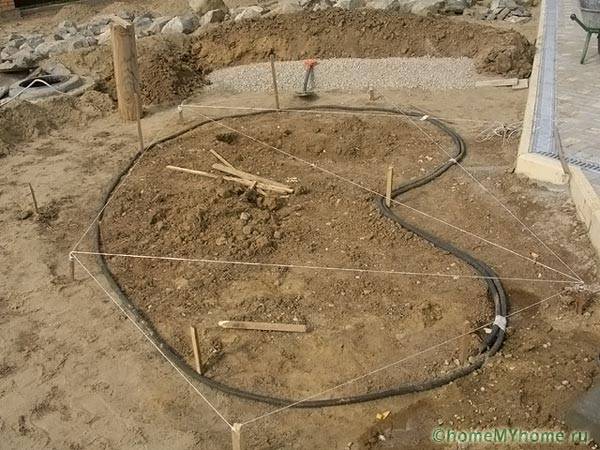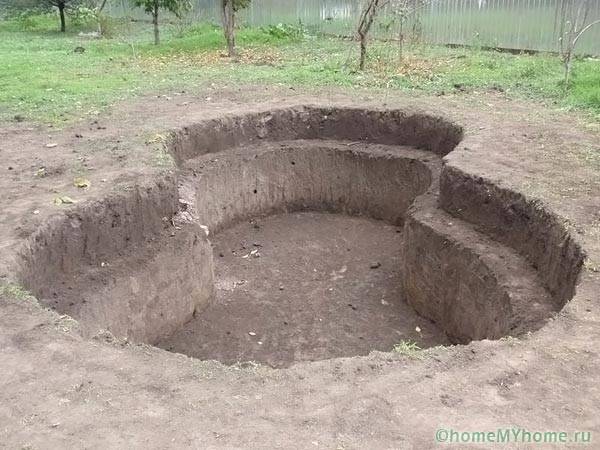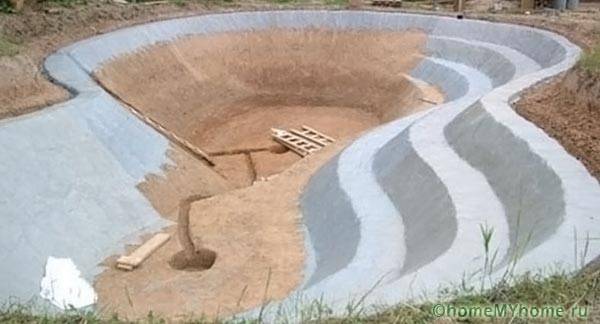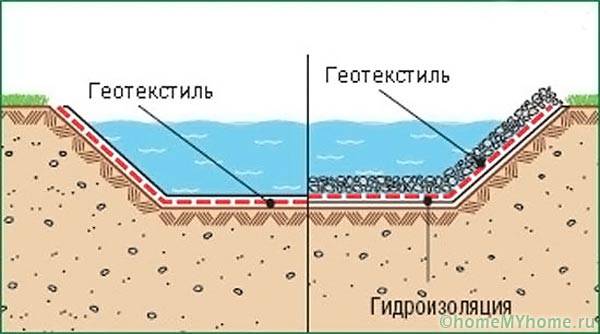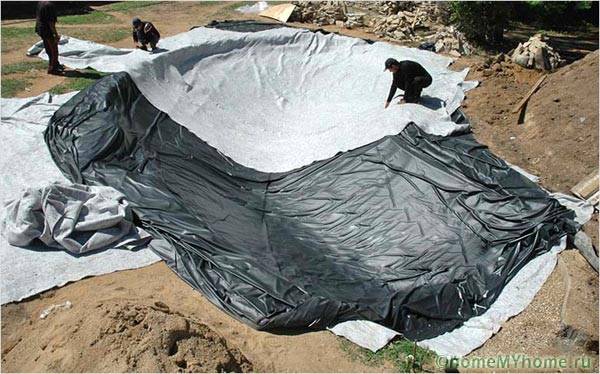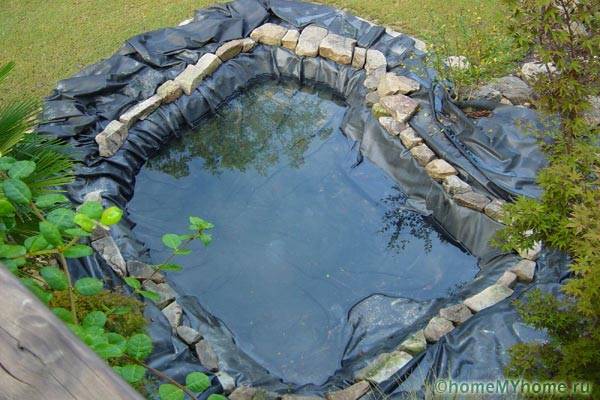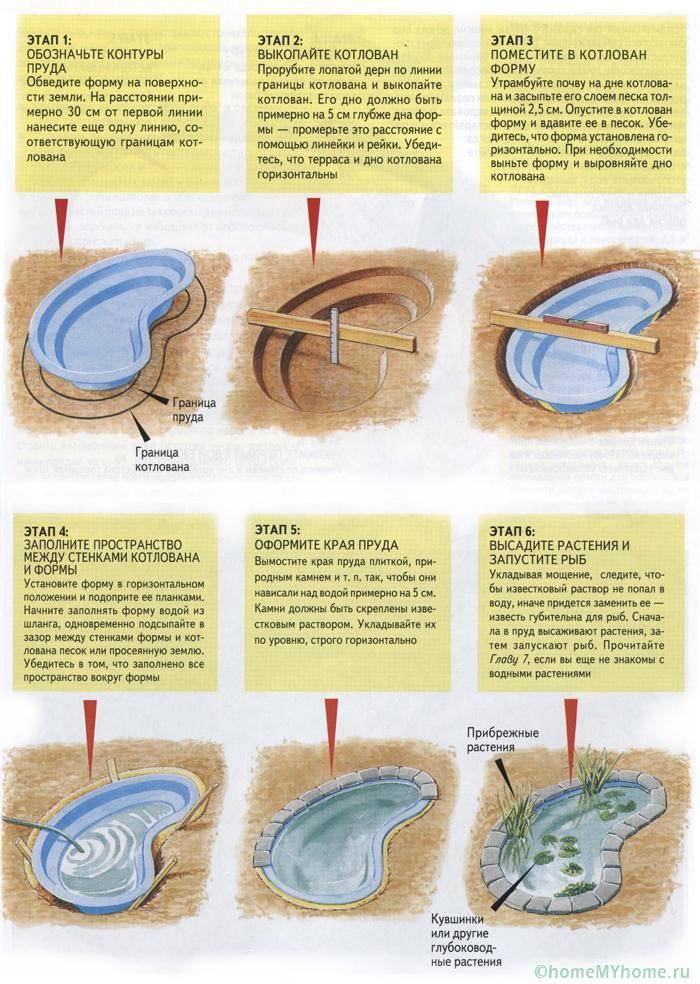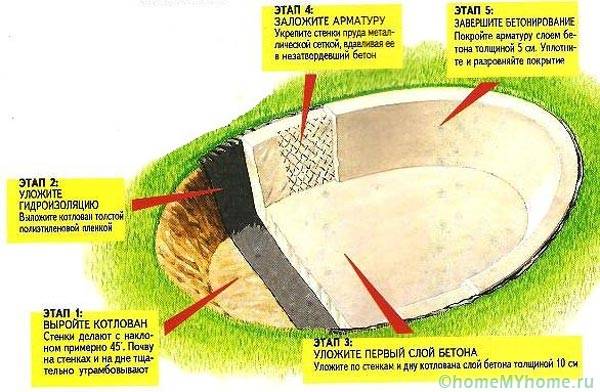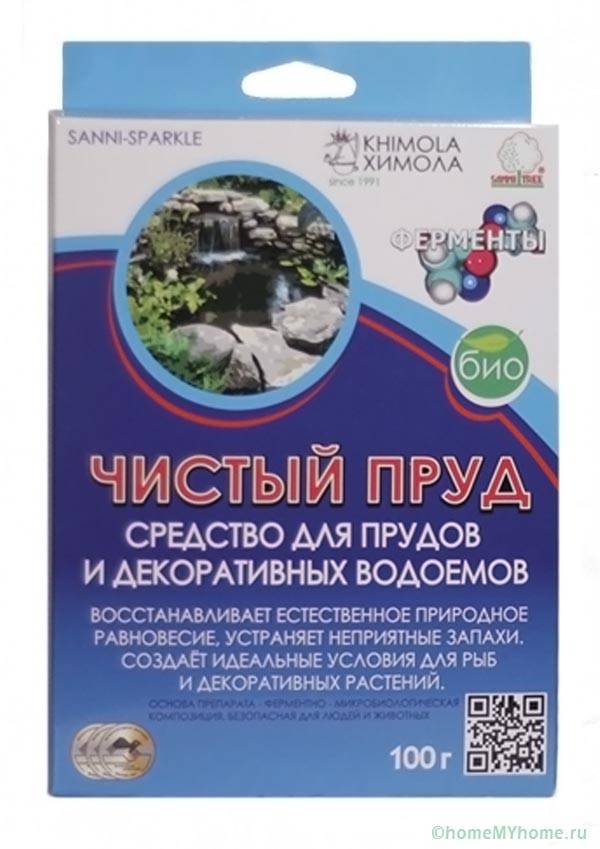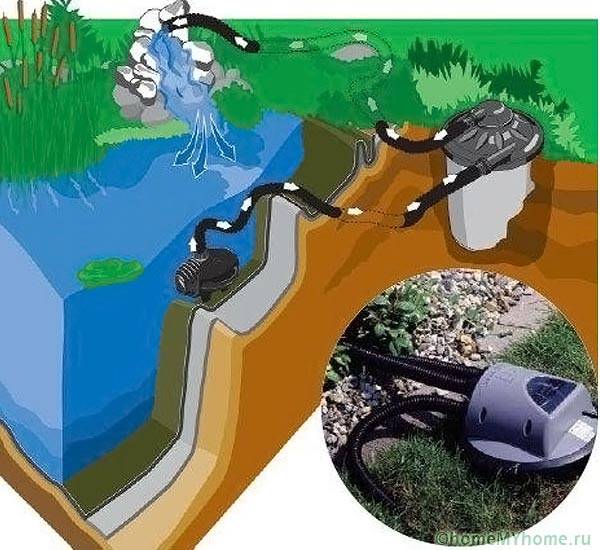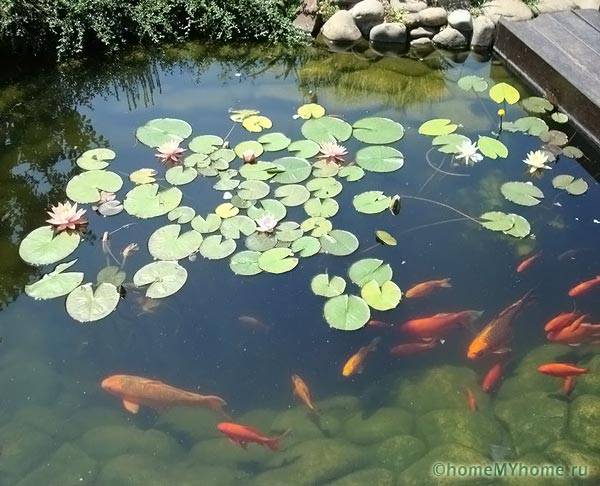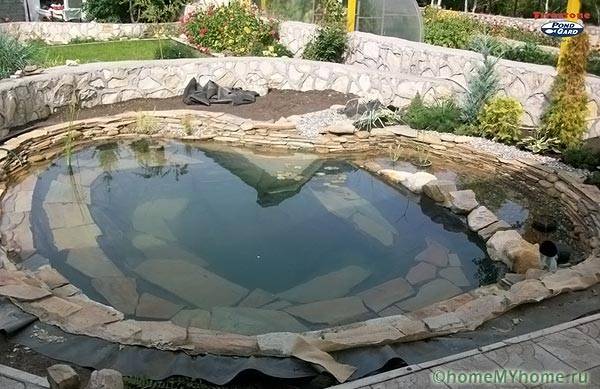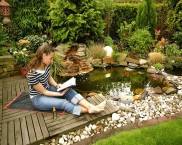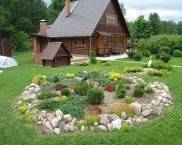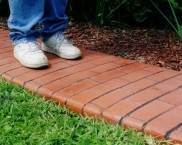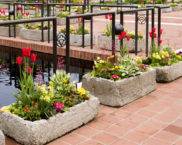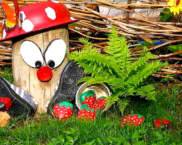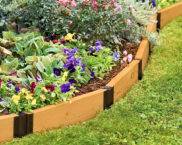DIY fish pond: step by step instructions
Rdramatically improves quality landscape design do-it-yourself fish pond plot, which can be made using different technologies from different materials. It is important to qualitatively integrate the reservoir into the site, to provide a normal microclimate for its inhabitants.
The content of the article
Video: ideas of a beautiful pond in the country
Site selection, marking, preparation
A do-it-yourself fish pond is an ecosystem in its own right, so careful design is required. When choosing a place for an artificial reservoir on the site, it is necessary to take into account the factors:
- preferable is a flat open area with constant lighting of one part, darkening by shrubs;
- the optimal size for landscape design is considered to be an area of 30 - 50 squares;
- a simple pit with the same bottom relief is unsuitable for ornamental fish; you should create a relief with rapids, changes in depths;
- the pond should be located far from the dwelling, so as not to reduce the comfort of living by the presence of insects, which invariably reproduce on the water surface;
- film, membrane waterproofing of the pit walls will allow to avoid underflooding of underground floors, cellars;
- different fish species need their own depth, vegetation, and air saturation, so it is necessary to provide space for aeration equipment.
It is not recommended to locate the reservoir in lowlands, near trees that clog it with foliage.
Selection of materials, installation technology
A do-it-yourself fish pond is made using several technologies:
- film reservoir - the relief of the bottom of the pit is covered with membranes that are pressed against by sand, gravel, the reservoir is filled with water, plants are planted, fish are launched;
- plastic pond - manufacturers produce bowls from composite, polymer materials, immersed in pits, the profile of which corresponds to the external relief of the container;
- concrete lake - the structure is considered the most durable only if measures are taken to exclude frost swelling of the adjacent soils, therefore, ring drainage is necessary, waterproofing of the underlying layer before pouring a multi-stage structure, concrete surfaces after the material has gained 70% strength.
The latter option has a maximum construction budget. Therefore, the owners of suburban areas prefer the first two technologies.
Film pond device
A film-type do-it-yourself fish pond is made according to the technology:
- marking - the outline for the main perimeter is marked with a rope or hose;
- dredging - sod, the fertile layer is removed to a depth of 40 - 60 cm from the building spot, usually scattered over the territory;
- depth differences - for each section, a similar marking with a rope is created, the soil is removed, removed from the section, the depth transitions are leveled with a shovel;
- alignment of the coastline - a block is laid across the pit or, as a rule, the horizontal of the upper part is controlled, if necessary, the soil is removed to form a 20 cm ledge along the entire perimeter, on which the film will be fixed with sand and stones;
- leveling - side walls, the bottom at different depths is poured with a 5 - 10 cm layer of sand, which is compacted manually or with a vibrating plate, laying the film on crushed stone is dangerous by breaking the tightness of the waterproofing;
- protection - the entire area of the pit is covered geotextile fabricwhich will protect the film from damage;
- butyl rubber membrane - the best option for a heavy film for a garden pond, cut in one piece to the size of a pit, fit into an impromptu bowl, run ashore 15 - 20 cm, pressed with stones;
- decorating the coastline - if necessary, the film is trimmed, the pit is partially filled with water, which presses the membrane to the bowl, expels air from under the film, after which, the coast is laid out with rubble stone, tiles, paving stones or covered with rubble.
In the pit of the pond for fish farming with your own hands, there should be no tree roots, large boulders. The recommended slope of the walls is 10 - 40 degrees, depending on the type of soil. Terraces facilitate the operation of the reservoir, cleaning the bottom, planting deep plants, are useful for fish. The canvas can be additionally fixed on the shore with steel hooks driven into the ground.
When buying a polymer, fiberglass bowl with ready-made shapes, the technology is almost the same. However, the contours of the excavated pit must fully correspond to the bottom of the structure.
During the concreting of the pond, the bottom is first poured at a depth, then the vertical formwork is installed for one step of the terrace. The outer surface is waterproofed with a film, the inner surface is often coated with polymer primers that are safe for the ecology of the reservoir.
Decorating, organizing fish life support
To make a pond with your own hands for fish farming, it is necessary to provide mechanical, biological, chemical cleaning, surface cleaning. Dirt, leaves are removed from the mirror of the reservoir with a net, chemical cleaning is carried out with stabilizing reagents that promote the development of bacteria (UV cleaners).
Biological filtration is carried out in a shallow reservoir near the main pond or with a special biofilter inside a technical well of 1 m of well rings. For mechanical cleaning, filtration wells are used by analogy with infiltration systems outdoor septic tanks:
- the depth of the well is less than the bottom of the reservoir;
- side walls are sealed with coating or pasting materials;
- instead of the bottom, a 40 - 60 cm layer of crushed stone, granite, marble chips is covered;
- water from the pond enters the well from below, filtered by non-metallic material;
- pumped back into the reservoir.
Important information! A complete replacement of water is harmful for a closed independent ecosystem of a summer cottage pond. Filtration into the well, adding new portions from it to the reservoir should be partial.
The construction of a pond with your own hands for fish farming ends with the placement of surface and bottom plants necessary for feeding fish, aerating water, breeding insects, which are also food for the inhabitants of the pond.
Related article:
Do-it-yourself pond in the country step by step. Photo instructions with tips for self-organization and decoration of the reservoir in a separate publication.
Conclusion
Thus, a pond for ornamental fish in a suburban area can be built in several ways, depending on the available budget, the size of the territory, and landscape design. Filtering equipment is necessary in any case, the comfort of fish, the budget for the operation of a homemade lake depends on the location of the reservoir on the site.
Video: do it yourself pond




